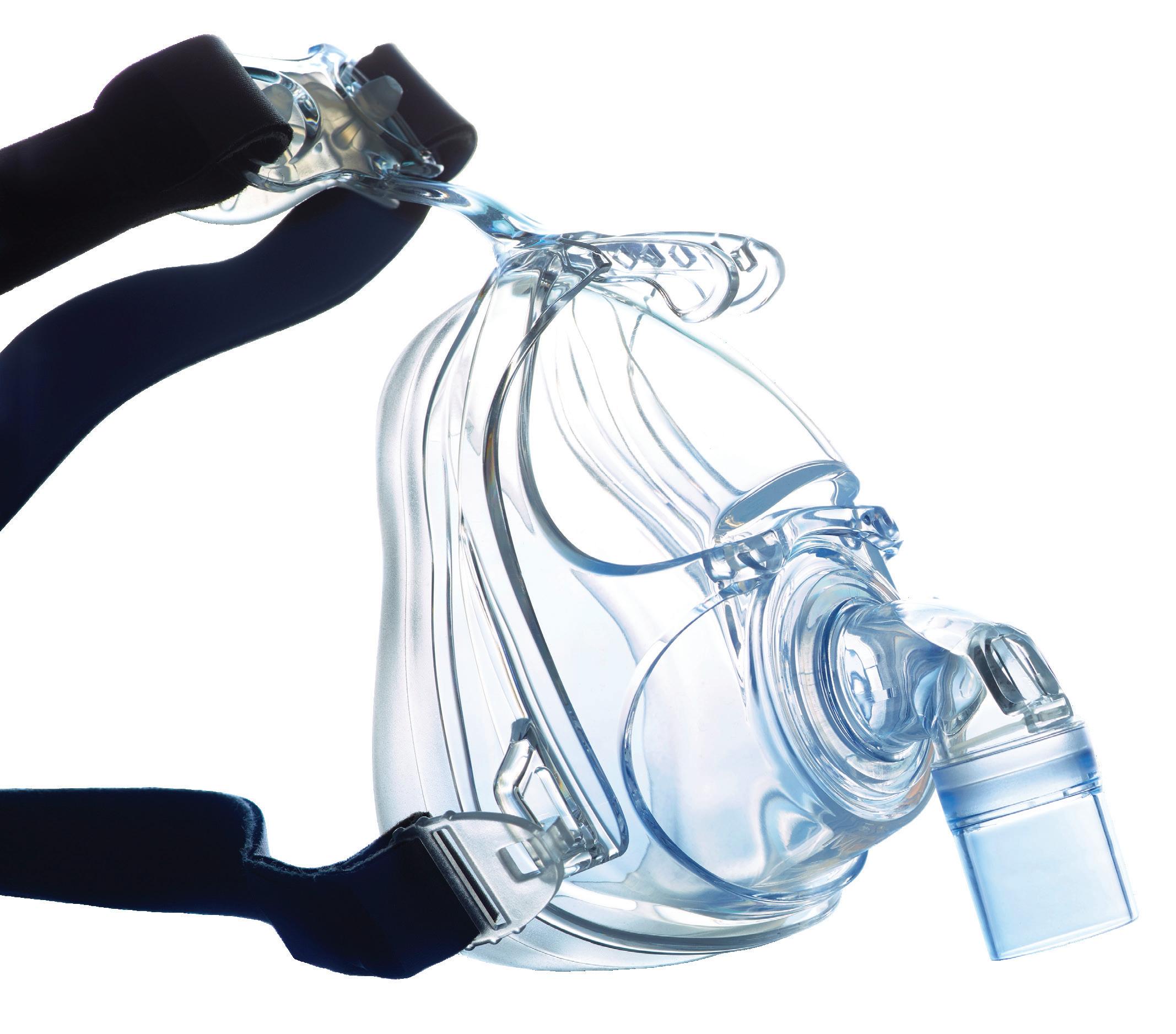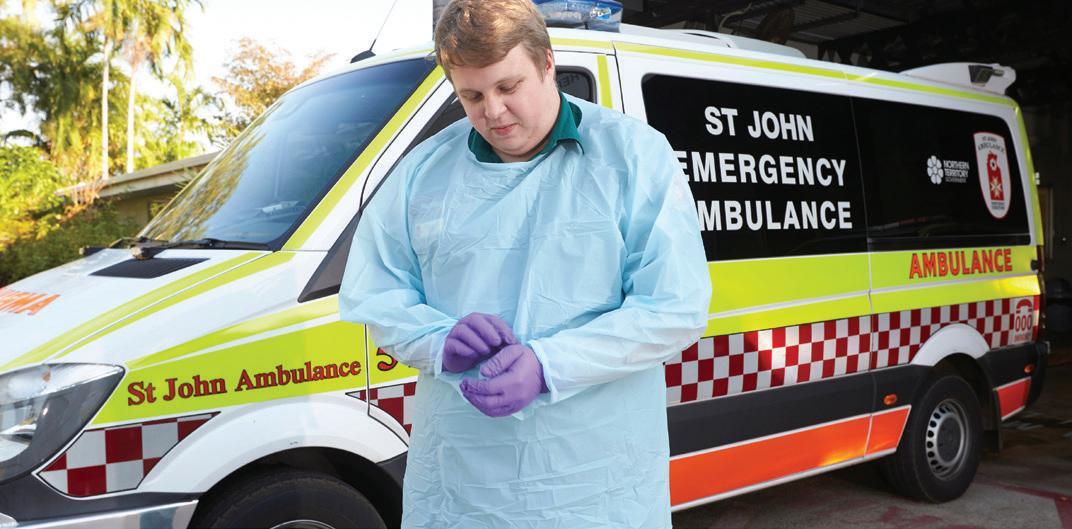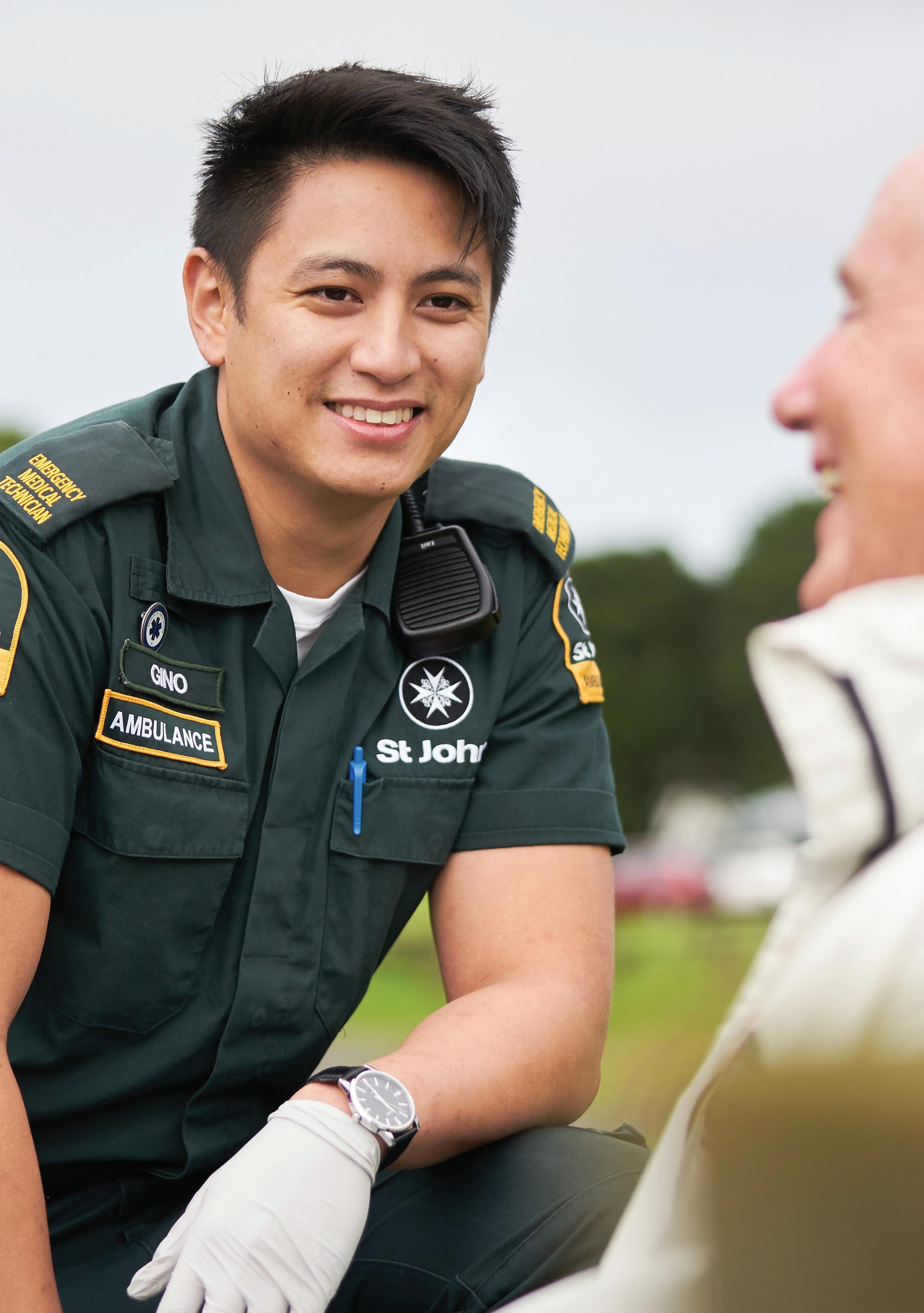
5 minute read
Excellence in Clinical Practice
Excellence in
Clinical Practice
This category is looking at innovation or capability in fields of skills mix, pharmacology and clinical intervention. It relates to patient treatment and outcomes. Previous submissions focused on high performance CPR, cardiac arrest outcomes, stroke protocols and improvements in pain management. Each service is encouraged to reflect on how their organisation has excelled in clinical practice with breakthrough moments that saw cutting edge techniques implemented to revolutionize the world of paramedicine.
Sponsored by
Excellence in Clinical Practice Ambulance pathway improves outcomes for STEMI patients in New Zealand
St John New Zealand
Team: Kris Gagliardi (team leader), Dr Tony Smith, Catherine Orr and Bridget Dicker In New Zealand, approximately eight patients per day suffer a STEMI, the most life-threatening form of heart attack. Only four patients will immediately survive to treatment. As part of the New Zealand Out-of-Hospital STEMI Pathway, Paramedics administer clot-busting fibrinolytic therapy to patients who cannot reach a PCIcapable hospital within 90 minutes of diagnosis. The target of out-of-hospital administration of fibrinolysis by Paramedics is within 30 minutes of ambulance arrival. Early administration can save up to 60 minutes compared to in-hospital administration of fibrinolytic therapy. During 1 Jan to 31 Dec 2020 fibrinolytic therapy was administered to 219 patients, potentially improving survival and long-term quality of life.
The STEMI pathway has resulted in greater than 70% of all patients being transported directly to a PCI-capable hospital from the scene, which is a lifesaver for the 30% of patients that don’t reperfuse following fibrinolytic therapy, and has reduced the requirement for interhospital transfers. For patients who can clearly reach a PCI capable hospital within 90 minutes of the diagnosis being made, ambulance staff phone an in-hospital clinician (such as a cardiologist) to directly activate the cardiac catheter lab, reducing the time it takes to open the patient’s artery in the cath lab.
The impacts of STEMI can be greatly reduced through timely interventions to unblock the occluded coronary artery and restore blood flow to the heart muscle (reperfusion). When patients receive timely reperfusion following a STEMI, they are more likely to survive, less likely to have long-term heart failure, less likely to have complications (such as reinfarction and angina), and usually have shorter stays in hospital. Heart failure is associated with a significant reduction in the patient’s long-term health and wellbeing and higher ongoing cost to the health system.
The optimal reperfusion strategy for STEMI is Primary Percutaneous Coronary Intervention (Primary PCI) provided the patient can reach a PCI-capable hospital within 90 minutes of the STEMI diagnosis being made. However, this is not achievable for many patients in New Zealand.
By introducing out-of-hospital fibrinolysis administered by paramedics, St John sought to significantly reduce the time it takes for fibrinolysis to be administered and increase the number of patients transported directly to a PCI-capable hospital from the scene. The aim of rolling out New Zealand Out-of-Hospital STEMI Pathway is to improve patient outcomes and support the delivery of equitable healthcare to all New Zealanders, particularly for those living in rural and remote areas.

Excellence in Clinical Practice SWAB CAR - Efficient and safe COVID testing method
St John Ambulance Australia NT
Team: Andrew Everingham (team leader) At the onset of the COVID-19 pandemic, a service delivery gap was identified by both St John NT and the Northern Regional Medical Group (NRMG) concerning the transport of suspected COVID-19 patients to the Centre for Disease Control (CDC) for testing (swabbing) and then returned to place of residence.
It was proposed that most patients could be swabbed in their place of isolation and the swabs transported to testing centres. This would reduce the strain on resources for both St John NT and the CDC whilst improving patient experiences. Based on the length of time required to assess the suspected COVID-19 cases and the relatively simplistic nature of oronasopharyngeal swabbing it was established that ambulance staff could perform the swabs in-field. And thus, the SWAB car was born (Swab, Welfare, Assistance, Backup). The SWAB car initiative aimed to reduce the threat of COVID-19 transmission to healthcare workers by testing patients in their isolation environment. As a result, the aim was to create a better patient experience by avoiding an unnecessary transport to hospital or the CDC, at the same time reducing the strain on ambulance operations.

Excellence in Clinical Practice Stroke Prehospital Informed Decision-making using EEG Recordings
Queensland Ambulance Service
CATEGORY WINNER
Team: Andrew Wong (team leader), Simon Finnigan, Wayne Loudon and Vivienne Tippett
Differentiation of stroke versus stroke mimic on clinical assessment alone can be challenging and therefore requires the use of imaging technologies. Out-of-hospital imaging is currently limited to mobile stroke units. These units have restrictions in terms of operational response area and cost.
A novel, accurate, user-friendly, and cost-effective technology could be used to guide transport and retrieval decisions and, in the future, could guide more targeted pre-hospital treatment. One such technology is Electroencephalography (EEG) which has a long history in the diagnosis and management of neurologic disease. Quantitative EEG (QEEG) has shown promise as a diagnostic tool for identifying the presence of ischaemia, is relatively low-cost, portable and with the use of computer aided interpretation can be used by a non-expert. A quantitative measure can be calculated (by computer algorithm) from an EEG recording thus providing an interpretation akin to a blood pressure or blood glucose level. The SPIDER study aimed to investigate the use of QEEG in the prehospital setting. The ‘Stroke Prehospital Informed Decision-making using EEG Recordings’ (SPIDER) study aimed to take the first step toward investigating a novel technological answer to the prehospital identification of stroke. The Objectives: • To investigate the ability of EEG markers to enable pre-hospital distinction between ischaemic stroke cases and all other patients with neurologic symptoms. • To investigate the ability of EEG markers to enable pre-hospital distinction between large vessel versus non-large vessel ischaemic stroke cases. • To compare the performance of clinical assessment tools against EEG markers. Study Hypotheses:
• EEG markers of abnormally slow brain activity will significantly differ between ischaemic stroke cases and all other patients with neurologic symptoms (the pertinent EEG marker being a global measure computed from all electrodes).
• EEG markers of abnormally slow brain activity will significantly differ between Large Vessel Occlusion (LVO) versus non-LVO, ischaemic stroke cases (the pertinent EEG marker being a measure from posterior electrodes overlying the stroke-affected hemisphere).
STAR AWARD
WINNER








